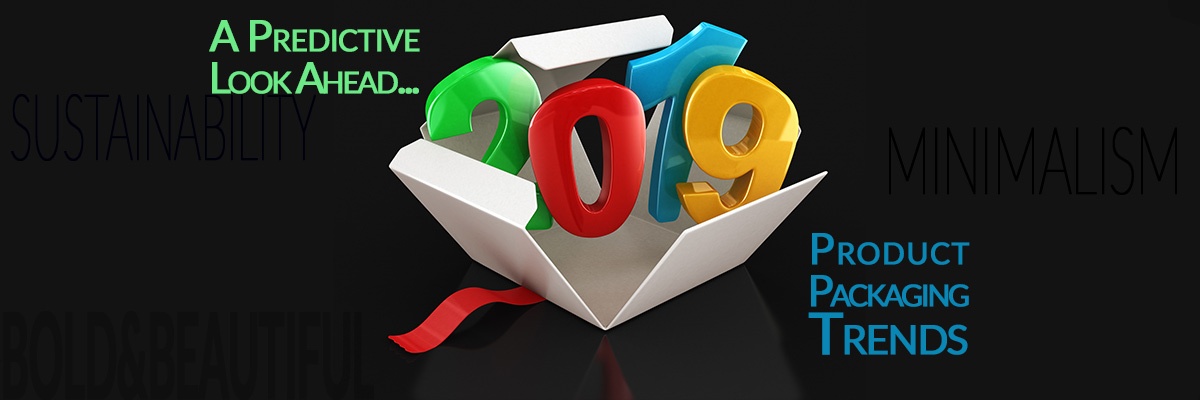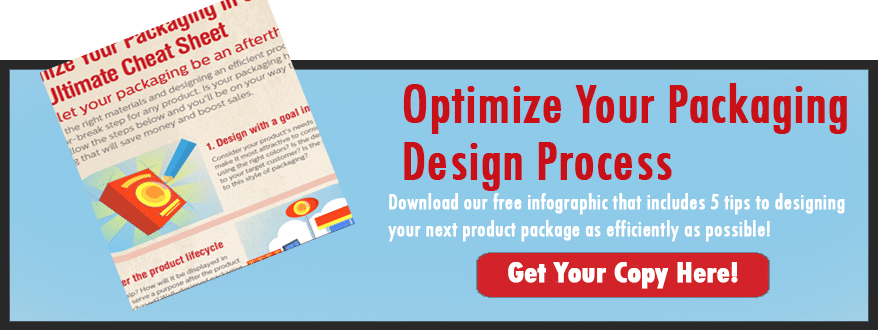A Predictive Look Ahead: 2019 Product Packaging Trends
Packaging Materials | Environment | The Business of Packaging | Packaging Design | Packaging Psychology
Another year has come and gone. As you reflect on what you’ve learned over the past 12 months and how you can improve your brand efforts in 2019, it’s important to keep a close eye on product packaging trends.
Developing a strong relationship with consumers requires a major focus on understanding their needs, preferences, shopping habits and realities. These factors influence the type of product packaging companies employ to maintain a healthy business and stand out from the competition.
Let’s take a closer look at what product packaging trends you can expect to see in the year ahead, and how you can use this insight to incorporate valuable design elements that appeal to your consumers.
Your Free Packaging Design Cheat Sheet
Get 5 actionable tips to start optimizing your packaging for efficiency.
Keeping It Simple
Minimalist packaging design is not necessarily a new trend, but over time, we’ve seen it pick up more and more momentum. In 2019, we’ll watch it continue to gain popularity.
Leveraging a simplistic style means sticking to the basics when it comes to product packaging design. Instead of wordy labels, extra materials or overuse of graphic treatments, minimalism centers on clarity, brevity, white space and other simple approaches that minimize clutter and improve retail impact. From streamlined labeling to minimalist photos and graphics with bold colors and fonts, there’s a variety of ways to take a simpler design approach.
Make no mistake, though: “Simple” does NOT mean “boring.” Your packaging still needs to stand out from the competition. The minimalist trend is not an opportunity to take the easy way out, but rather a means of clarifying your brand message and finding a streamlined way to differentiate your product from the competition.
Gap, for example, is a well known and highly regarded brand that has embraced minimalist design for years. Marketing veteran David Miskin, CMO of Lightstone, first applied the minimalist attitude doing window displays while working at the Gap. “A minimalist philosophy doesn’t just spare space; the designer works using pieces that tell a story, he explains. “By focusing on what is essential, a designer can better exemplify a company’s or brand’s narrative by focusing on a few points that make a big difference.”
The Bold and Beautiful
If you don’t think typography requires any extensive amount of consideration, you may want to rethink this stance. In tandem with the minimalist approach to product packaging, the new year is likely to shine a brighter light on big and bold typography.
“As consumer attention spans shrink, it’s becoming more important than ever for designers and brands to relay their messaging as clearly and as quickly as possible, especially in packaging,” Packaging Digest pointed out in a since removed article. “In the coming years, we expect to see more brands take this to the extreme by using bold fonts and fewer words to get their message across loud and clear—and stand out on shelves.”
Consumers are bombarded with brand messaging everywhere they turn, not to mention highly distracted by technology and the immediacy it brings to our culture. One of the very best ways to grab their attention and reveal your message efficiently is by applying clear, smart typography choices. Be sure to keep a few of these tips in mind:
- Know your shoppers. Generational, gender-related and other defining consumer characteristics matter. Understand the people you’re catering to and use that knowledge to choose typography that speaks to them.
- Choose your case wisely. It’s important to understand the intricacies and tricks of the human eye as it pertains to upper and lowercase letters. Use combinations that make it easier for consumers to read and digest.
- Coordinate colors with purpose. The size and shape of your packaging will impact the type of color schemes that work best for your typography. In choosing between light on dark or vice versa, make sure you’re leveraging the best approach to meeting the unique needs of your product packaging.
Reduce, Reuse, Recycle
Sustainability has a particular topic of interest in the packaging world. But no matter how many times we cover it, it never loses its importance. Consumers care about the environment, which means your company must too. In 2019 and beyond, it is paramount to approach your packaging design with a serious focus on minimizing your ecological footprint.
The cheapest and most accessible materials, like plastics, are being replaced by biodegradable materials, like paper, hemp, starch and cellulose, and more easily upcycled materials like bamboo and glass. From flexible films to dual-purpose designs, there’s no limit to what you can do to develop more environmentally sound product packaging.
By heeding this sustainable packaging trend, you have the potential to:
- Reduce your carbon footprint. Limit your CO2 emissions by cutting down on the amount of packaging you use to complete your finished goods. The weight of your packaging materials affects the amount of energy required to produce your product and ship it. Switching to a lighter weight material can positively impact your carbon footprint.
- Fight allergens and toxins. Most biodegradable packaging options are non-toxic and allergy free, and the same can be said for most flexible materials. Not only is a bio-plastic better for the safety and health of consumers, but it also gives people more incentive to buy your product.
- Minimize materials and resources. Sustainable packaging can reduce solid waste, water usage and electricity. Flexible options enable you to use less materials, which is good for the environment AND your bottom line.
- Boost brand image and increase sales. There are many factors that shoppers consider before making a purchase, and the environment is definitely one of them. Using product packaging to elevate your brand’s reputation for eco-consciousness can help elicit consumer trust, expand your market and capture greater sales.
As concerns over pollution, waste and other global issues rise, it’s paramount to be part of the solution. By communicating your environmental efforts on the product packaging, you increase brand appeal and bolster credibility. And that’s a trend that never goes out of style.
Keep an eye on these product packaging trends in 2019, and be sure to approach your design and process from an informed perspective. Regardless of what’s trending, it’s crucial to prioritize the unique needs of your product and your consumers, utilizing the right packaging to fit those requirements. The new year is a new opportunity to apply smart packaging options you may never have considered before.
For ideas on how to get started with optimizing your packaging design process, check out our free packaging design efficiency cheat sheet.
About David Roberge
I am grateful to be part of the outstanding Industrial Packaging team. I am able to hang out with some of the most knowledgeable folks in the packaging industry. I feel even luckier that I am able to share that knowledge with you. I love learning, hiking, and growing people and teams both personally and professionally, and helping companies grow better.




